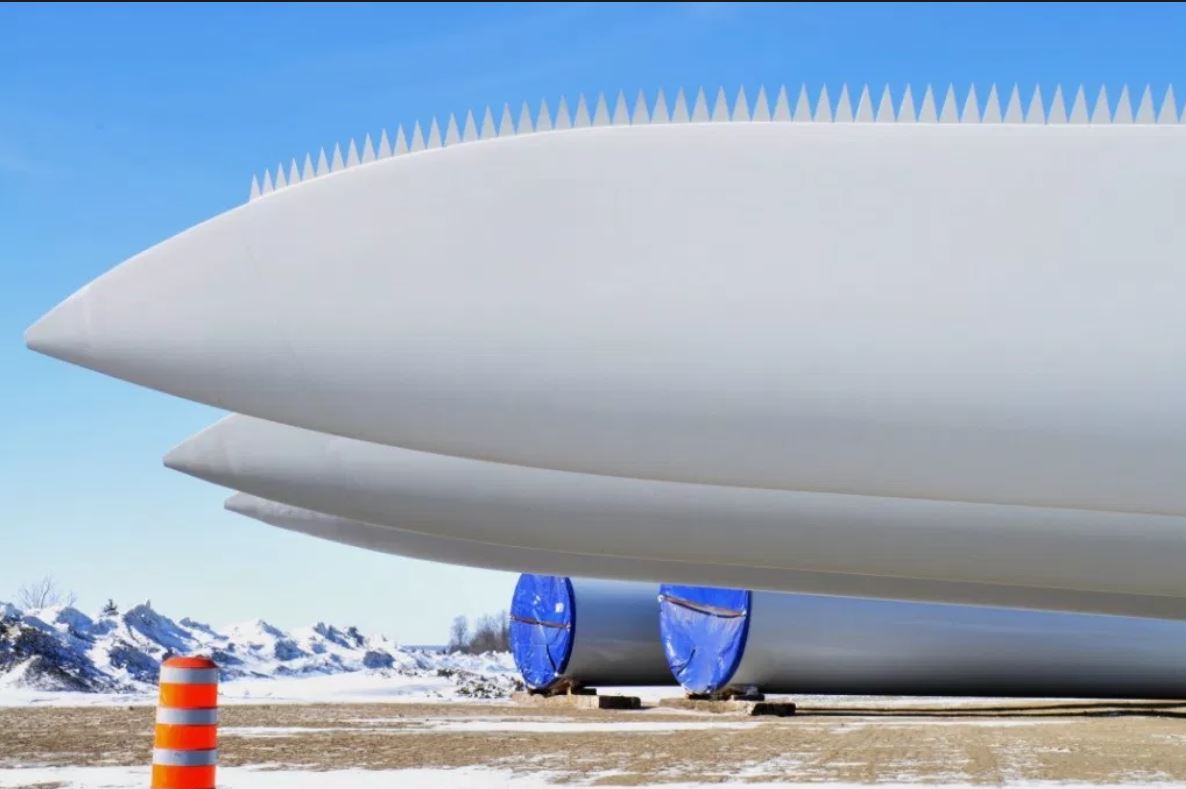Every now and then a new technical solution appears in the wind energy business and it’s slowly implemented in the new wind turbines.
A good example is the use of trailing edge serrations – not really a new idea (it has been around for several years) but a simple solution that it’s spreading and gaining acceptance in the industry.
Basically they are a method that help reducing the noise of the blade and they look like small triangles. You can see them in the picture at the beginning of the post, which I ironically stolen from an anti-wind energy website.
This solution is particularly beautiful because it can be retro fitted – meaning that it can be applied also to existing, working wind turbines.
They work reducing the turbulent boundary layer on the trailing edge of the blade, which is the source of a relevant amount of the noise. This is a complicate subject and I’m not an expert in acoustic, but in general what happen is that the turbulences and the vortices created by the layer of air that separate from the edge of the blades are creating the majority of the noise that we hear.
It’s interesting to observe that the length of the triangles has an impact on the reduced frequencies (the longer the serrations, the bigger the reduction at the low frequencies). This help reducing the frequencies that are more annoying for humans.
Also, it is worth mentioning that the amount of dB reduction is function of the serrations flap angle.
Obviously they don’t do miracles, but a reduction of 1 or 2 dB(A) for their price is a good trade off.
It’s also worth to notice that they do not affect substantially the performance (that is, the production) of the wind turbine.

Leave a Reply